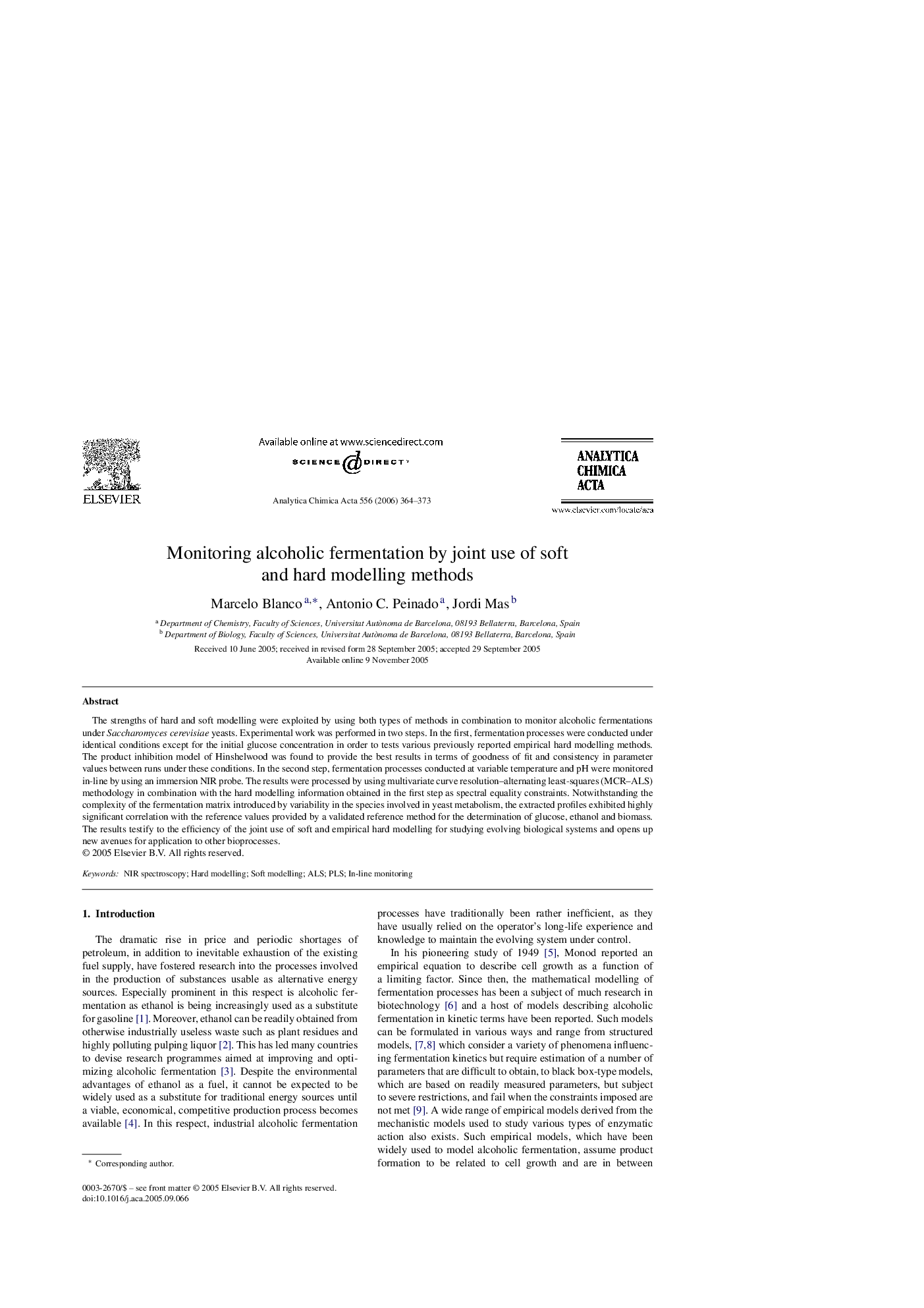| Article ID | Journal | Published Year | Pages | File Type |
|---|---|---|---|---|
| 1171813 | Analytica Chimica Acta | 2006 | 10 Pages |
The strengths of hard and soft modelling were exploited by using both types of methods in combination to monitor alcoholic fermentations under Saccharomyces cerevisiae yeasts. Experimental work was performed in two steps. In the first, fermentation processes were conducted under identical conditions except for the initial glucose concentration in order to tests various previously reported empirical hard modelling methods. The product inhibition model of Hinshelwood was found to provide the best results in terms of goodness of fit and consistency in parameter values between runs under these conditions. In the second step, fermentation processes conducted at variable temperature and pH were monitored in-line by using an immersion NIR probe. The results were processed by using multivariate curve resolution–alternating least-squares (MCR–ALS) methodology in combination with the hard modelling information obtained in the first step as spectral equality constraints. Notwithstanding the complexity of the fermentation matrix introduced by variability in the species involved in yeast metabolism, the extracted profiles exhibited highly significant correlation with the reference values provided by a validated reference method for the determination of glucose, ethanol and biomass. The results testify to the efficiency of the joint use of soft and empirical hard modelling for studying evolving biological systems and opens up new avenues for application to other bioprocesses.
